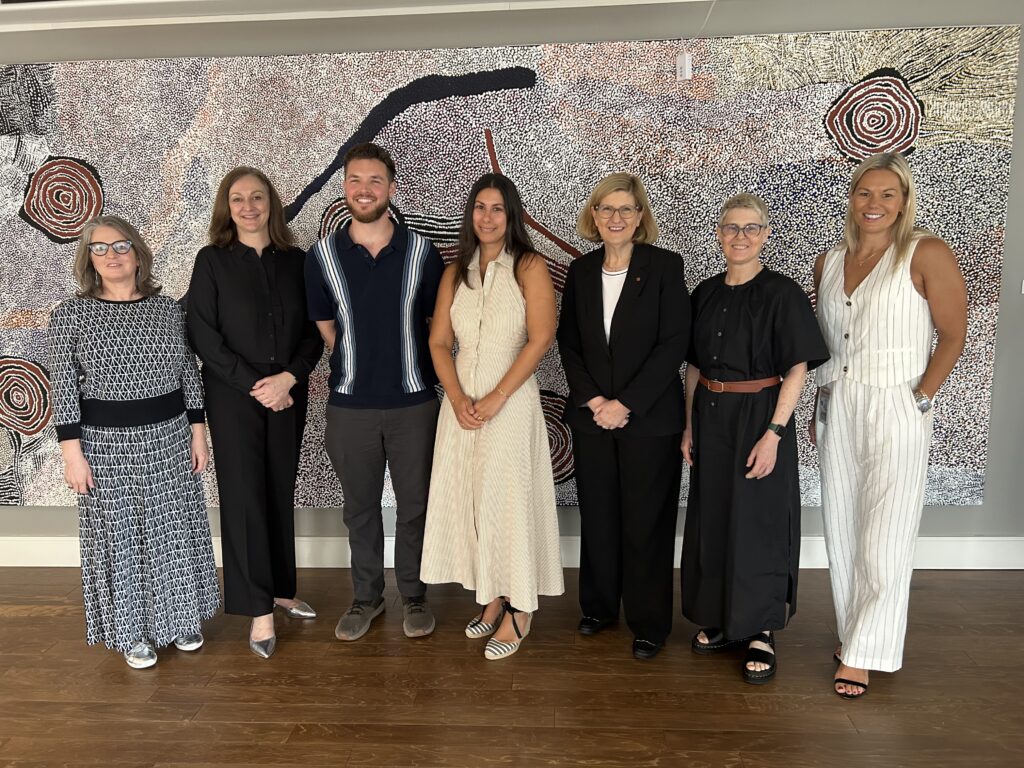Standing Committee
The Australian delegation is a standing committee focused on Community Affairs. Recently, they have received a lot of correspondence from tick-borne disease patients in Australia requesting that the committee take their concerns seriously and make TBDs a priority in health care.
This is so important because for a long time, similar to the United States, tick-borne disease has been denied and overlooked in Australia. Even though there are many species of ticks that are known to transmit disease in the country, patient advocates from organizations like the Lyme Disease Association of Australia continue to see a lot of examples of patients being mistreated or ignored within their Medicare program.
Many of the Senator’s in the delegation were surprised by the lack of effort from their medical professionals to address this issue, especially after hearing of the prevalence of the infections here in the United States. The purpose of their visit is to develop a report to the Australian Government to inform the future of tick-borne disease care in the country.

Discussion Points
In order to develop this report, the Senate Delegation rapidly fired dozens of questions to Project Lyme representatives. They can essentially be broken down into three areas:
- What are the issues facing the public?
- What are the issues facing patients?
- How is Project Lyme or other sources trying to solve these issues?
What are the issues facing the public?
In general, people lack knowledge on the number of tick species that exist in the United States and the number of infections they can transmit. This seems to be a similar experience in Australia because when informed that there are over 15 known tick-borne diseases, the committee was taken aback, even though there is a similar number in their own country.
Senators asked questions like “do all ticks carry the same disease”, “do ticks transmit disease to each other”, “what percentage of ticks carry disease”, and more! If these highly educated individuals are still rather naive to ticks and disease transmission, then imagine how little the general public knows of these dangers.
They were also surprised by the wide range of symptom presentations, especially across different stages of infection. One of the most impactful symptoms, or lack thereof, are tick-borne rashes. We described how only a percentage of tick-borne patients present with rashes and how if they do, it may look differently every time. After reviewing images of rashes, they mentioned it was probable that either they or a family member definitely had a rash like that before.
This led to conversation about diagnosis. We described how Lyme is diagnosed as well as the main issues facing diagnosis including tests that have low sensitivity and success rate. Watch The Quiet Epidemic to learn more about the history of testing issues. Project Lyme is proud to be funding the future of diagnosis, such as a urine nanotrap technology, and we shared this research with the committee with the hope they will fund similar work in Australia.
Prevention is another extremely important piece of interacting with the general public. As the environment continues to change, extending the tick’s active season and expanding their population, preventing Lyme is ever more important. We educated the committee on the proper steps to prevent a bite. We also discussed should someone be bitten, how they can appropriately remove a tick, and that they need to take prophylactic in order to clear the body of infection before it disseminates. Learn more about how to prevent Lyme here and here.
Even though the United States can still be dismissive of patients, we are still seemingly ahead of other nations like Australia in addressing the needs of the general public.
What are the issues facing patients?
Now we get to what most of our followers are going through, chronic Lyme.
We described to the Standing Committee that many doctors take a one size fits all approach to treatment, even though every patient is different in terms of how their body reacts. It is so important to take a clinical and holistic approach when treating chronic tick-borne disease.
Even if chronic patients find a treatment that works for them in the United States, it may still be unaffordable and inaccessible because of the lack of insurance coverage. This seems to be less of an issue in Australia as they have Universal Healthcare, but patients there are still facing two core problems, being prescribed treatment, and having reliable treatment options.
With 476,000 cases annually in the United States and 20% of patients experiencing persistent issues, it is estimated that upwards of 2 million patients are currently experiencing chronic tick-borne disease. While Australia has an approximately 10x smaller population than the US, this still means there are likely hundreds of thousands of chronic patients being overlooked. The committee recognizes this and is hoping to make changes soon that will benefit the patient population.
How is Project Lyme or other sources trying to solve these issues?
Project Lyme exists as a nonprofit that
- Educates the public through public service announcements, documentaries, educational webinars, scientific conferences, and media efforts.
- Funds research at major institutions focused on creating better tests for early and disseminated infection and treatment protocols for chronic cases.
- Advocates the government to increase funding for both research and education efforts, as well as taking steps to increase prevention and other public health methods.
- Helps patients with support groups and story sharing to build community and increase awareness.
In addition to us, there are many other amazing nonprofits such as LymeDisease.Org, ILADS, or LymeLight Foundation that are helping patients.
At a government level, there are things like the Tick-Borne Disease Working Group and recent legislation aimed at identifying and addressing issues in the community.
Conclusion
Project Lyme is proud to be considered an international expert on the subject of tick-borne disease and will continue to work with the Australian Standing Senate Committee to develop a report for their Health Department.
In addition, we plan to expand our programming and focus on driving impact for patients in the United States.




